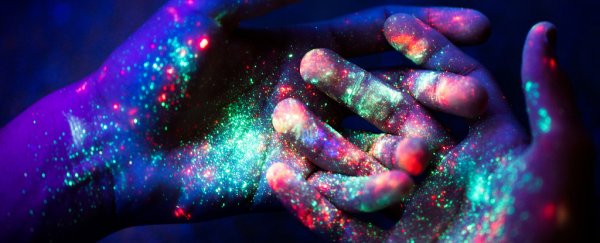A teenager who accidentally ingested 10 times the normal recreational dose of LSD. A 26-year-old who overdosed on the same drug, not knowing she was pregnant. A woman who took 550 LSD doses all at once, mistaking it for another drug entirely.
These exceptional and alarming stories of massive LSD ( lysergic acid diethylamide) overdoses that happened to real people are all detailed in a new study, seeking to understand the medical effects of extremely high dosages of psychedelics in recreational settings.
Why do scientists want to know these things? In recent years, renewed interest in the use of psychedelics for medical treatments has boomed, with numerous researchers looking at what LSD does to the brain, measuring the effects of microdosing, and charting the history of psychedelics in the medical context.
Despite the ongoing promise of some of this research, comparatively little is known about the potentially adverse effects of extremely high doses of drugs like LSD, which of course isn't something scientists can experimentally test on human patients.
Because of that, the only way to really gauge what happens is to look at medical records of instances involving real-life overdoses, which is the basis of a new paper from Canadian researchers, who gathered information on three separate cases from interviews, health records, case notes, and collateral reports.
In the most remarkable case, a 46-year-old woman called CB, who had a history of using morphine to treat Lyme disease-related pain in her feet, accidentally snorted a 55 mg dose of pure LSD in powder form, thinking it was cocaine.
"This was the equivalent of 550 times the normal recreational dosage of 100 mcg," the authors, led by first author and psychedelics research specialist Mark Haden from the University of British Columbia, write in their study.
"She realised she had a problem within 15 minutes and called her roommate for help."
Over the next 12 hours, CB vomited frequently, sitting upright (in her recollection), but mostly "blacked out" during the ordeal. This was followed by another 12-hour period in which she felt "pleasantly high", but was still infrequently ill.
"The collateral report from the roommate revealed that she sat mostly still in a chair with her eyes either open, closed, or rolled back, frothing at the mouth, occasionally vocalising random words and vomiting frequently," the researchers explain.
"Ten hours later she was able to converse, went to the bathroom, and seemed coherent."
After her recovery, CB experimented with microdosing LSD to help with her foot pain, and eventually ceased taking morphine altogether, although she did experience episodes of anxiety, depression, and social withdrawal.
In another case, a 15-year-old female called AV accidentally ingested approximately 10 times the normal recreational dosage at a party. AV had a history of cannabis and psychedelics use, and had been previously diagnosed with depression, hypomania, and bipolar disorder.
For several hours after her overdose, AV experienced erratic behaviour, followed by what looked like a seizure. After the incident, AV's clinical depression seemed to lift, her family and doctors noted.
"AV's father observed that his daughter appeared to be completely recovered from her mental health concerns after the overdose incident," the researchers write.
"AV reports that after the LSD overdose incident she experienced life with a 'normal' brain, whereas her brain felt chemically unbalanced before the incident."
A third case detailed in the study documents the experience of a 26-year-old woman called NM who attended the same party as AV and also overdosed on LSD while there, ingesting five times the regular recreational 100 mcg dosage.
NM was an experienced user of psychedelics, but was unknowingly two weeks pregnant at the time of the incident. Fortunately, there is no evidence that the drug exposure developmentally affected her child – who is now 18 years old.
While none of these overdoses should be intentionally replicated by anybody under any circumstances, the researchers note that, despite the distressing experiences felt by the participants, "there appear to be unpredictable, positive sequelae that ranged from improvements in mental illness symptoms to a reduction in physical pain and morphine withdrawal symptoms".
Of course, these are largely anecdotal recollections of just three events that happened in some instances several years ago, so we should be very cautious in how we interpret the findings, beyond acknowledging that, thankfully, no-one seems to have been harmed in these cases.
On that note, the study corroborates some of the findings of a study from the 1970s, which detailed the severe reactions due to massive LSD overdoses in eight people, none of whom ended up dying, and all of whom ultimately recovered.
Nonetheless, in light of what they went through, it concluded: "Massive LSD overdose in man is life-threatening and produces striking and distinctive manifestations".
The findings are reported in the Journal of Studies on Alcohol and Drugs.
